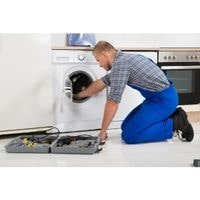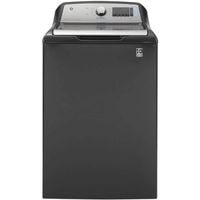GE washer not filling up all the way. In order to function properly, washers require water.
If your General Electric washer isn’t filling up with water, there could be a variety of possible solutions because resetting the machine should get it going again.
However, before you begin troubleshooting the problem by following any specific steps, always start by making sure that the washer is actually plugged into an electrical outlet and not just a power strip or extension cord, which isn’t a real electrical connection.
Water heating devices may also stop working if they’re improperly set or placed close to a heat source such as a stove or fireplace because overheating can cause them to malfunction in this way.
After that’s been taken care of, see if the washing machine fills up with water but then drains away when it’s turned on or if nothing happens at all.
GE washer not filling up all the way

Washing machines are the kinds of appliances you don’t give a lot of thought to until something breaks down and you need to deal with it.
The General Electric company makes a wide variety of washing machines, some of which experience different problems than others.
However, some basic troubleshooting procedures can get just about any GE washer up and running again if it’s experiencing some issues such as it not filling up completely or draining at all.
Defective Water Inlet Valve
The inlet valve serves to determine how rapidly the water will enter into the washing machine when being filled.
If the inlet valve malfunctions, it can result in a slower rate of filling or one that does not fill at all.
The inlet valve also relies on high enough water pressure to work properly. First, check that adequate water pressure is entering the house.
Then, see if there’s gunk clogging up the screens located inside of where your hose attaches to the inlet valve itself. If it still doesn’t work properly, you’ll need to get a new one.
Low Water Pressure
The home water pressure might not be strong enough if the water inlet valve isn’t getting sufficient pressure from your hose line. It requires at least 20 psi for the valve to open and release the water out of the system.
Check its hose line’s volume and ensure that you have enough supply even when multiple fixtures are being drawn upon at once.
Replace the Water filter
Most washers will have filters on the intakes to strain any remaining pieces of lint or other inorganic materials. If these are clogged, then this presents a major problem for your machine.
In some cases (as well as with all washing machines), hoses may develop a leak from interior cracks or cuts that don’t appear too noticeable from the outside of the hose.
The best way to know for sure whether you need a new filter or hoses is by making sure you’ve inspected them closely and replaced any leaky sections that do show up using stiff patch material designed specifically for sealing holes in rubber hoses.
Make sure you don’t buy anything but “garden hose” grade patching material because it may be possible to use without removing them from their fittings.
Check the Water Hose
Unscrew the washer’s access cover with a screwdriver. Inspect the water hose connections going from the wall to the washer at both ends (including the hoses going through holes in the back of the machine). Listen for gurgling or hissing sounds coming from both ends of each connection.
If you hear something, shut off your faucet completely and turn on your washer’s drain to drain out any remaining water in your machine.
Carefully disconnect whatever end of each hose is free until you reach a point where water is not coming out anymore, then let it all drain out into a bucket or other container.
Replace any section which you find to be clogged using new parts if necessary; otherwise check for buckles, tears, etc.
Inspect the water level switch
A malfunctioning water level switch may cause the washing machine to not fill with water or not fill properly.
The best first step is to unplug and open the lid to examine the inside of the washer and locate a moving part under the lid marked by a little clear tube called a “water valve switch.” Be sure that it’s not clogged.
The main issue with this part usually involves either if it’s not clogged or if it’s having some electrical problem.
One way you can test to see if it has an electrical problem is by checking this water valve part with a multimeter set on ohms, but chances are more than likely that it could be mechanical.
Related Guides
